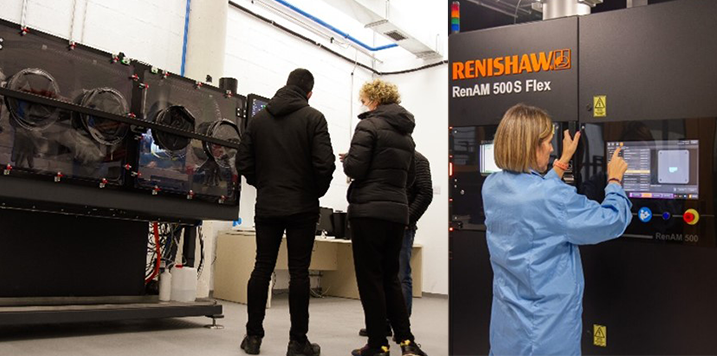 02 November, 2023
02 November, 2023It has been nearly three years since Ceit purchased the Production SystemTM P1 printer from Desktop Metal and started developing binder jetting (BJT) process for several materials.
BJT is an AM technology where a liquid binder is selectively deposited on a powder bed and the part is manufactured layer by layer through an STL design. Massive production of complex, relatively small components is possible with this process. The achievable productivity level is associated to the process-inherent separation between the shaping and densification step that increases the throughput of both stages.
During this time, Ceit has collaborated with several companies in the development of the process parameters for Cu Alloys, Ni base superalloys, High Speed Steels or different grades of stainless steels. Being an open materials platform provides an additional advantage as non- commercial grades can also be processed.
On those grounds Ceit has one of its cases of success as designed, atomized and optimized the BJT processing route of a new high speed steel for the tool sector, thus leading on a component with better performance.
In addition, Cu and its alloys have high potential to be used in Sinter-Based AM for applications related to heat management. This combination is favouring the emergence of innovative solutions based on more complex and efficient designs for heat exchangers and heat sinks.
Hence, Binder Jetting is gaining attention due to its strong potential for high speed and low-cost manufacturing of complex near net shape parts, however there are some design limitations that have made room for other AM technologies.
In order to reinforce the areas in which BJT is weaker, Ceit has also opted for powder bed fusion – laser based (PBF-LB) technology, also known as Selective Laser Melting (SLM). This technology is also based in layer by layer 3D manufacturing of metallic components starting from metallic powders. However, unlike in BJT technology, PBF-LB uses laser beam to melt the material and therefore a dense component is achieved without the need of debinding and sintering steps.
In the last 6 years Ceit has been helping local industries to develop their PBF-LB lines by advising in process parameter designs and developing tailored post heat treatments. Since this year, Ceit has also available the Renishaw RenAM 500S Flex PBF-LB machine which gives higher support for developing process parameters for new materials and components that are interesting in several sectors such as aeronautic, medical or energy.
PBF-LB becomes very interesting for components with very complex geometries, for instance heat exchanger or bipolar plates electrolyzer for H2 production. In this line, first studies with Cu alloys have been started.
Another important sector for PBF-LB is the medical sector, where this technology allows manufacturing of customized designs for each patient. Currently Ceit is working with a company of the dental sector to develop a new titanium alloy for PBF-LB.
Subscribe to our newsletter. Just insert your e-mail and you will receive the latest news.